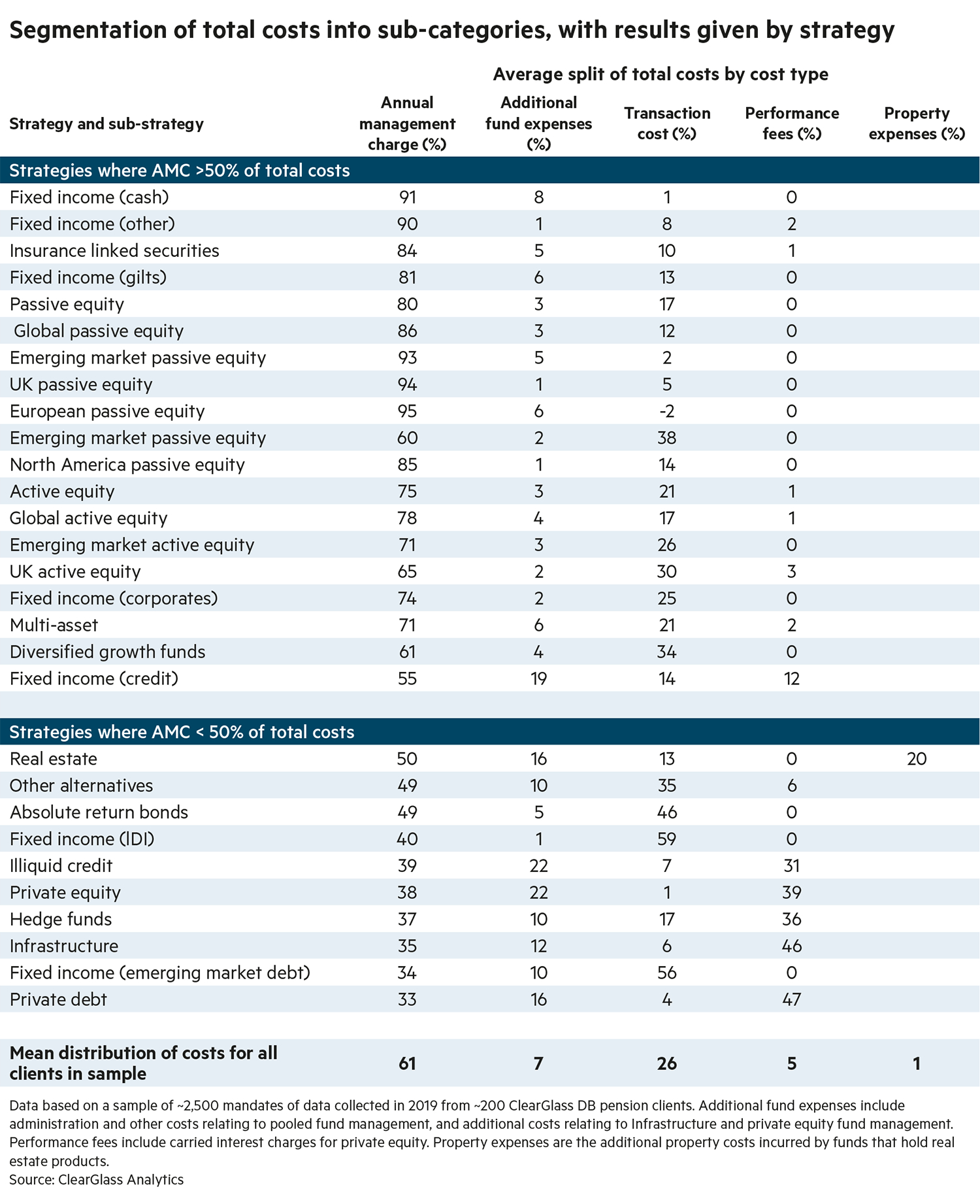Update: In response to reader requests, we have now published the full table of Dr Chris Sier's findings on average costs with a breakdown by asset class, for use as a resource for the pensions community.
‘You can’t manage what you don’t measure’ is a phrase much quoted by those, including myself, who believe in getting into the detail of cost data.
But if you have never really made a concerted effort to collect such data in the past, just how much have you been missing?
If you add performance fees, which historically have been routinely stated by managers (excluding carried interest), most pension funds will have known almost two thirds of their total costs
Discovering that the actual total costs for your scheme are, as one commentator recently suggested, three times larger than expected is understandably unnerving and embarrassing. It might even put you off starting the process of cost collection.
However, trustees should not be deterred – for one thing, neither hard data collected under the Cost Transparency Initiative nor my own experience over the past decade support these levels of undiagnosed total cost.
Costs vary greatly by asset class
Dependent on strategy and asset class, it is possible for up to two-thirds of the total costs of asset management to be attributed to things you might not routinely have collected, such as transaction costs, additional fund expenses, carried interest and property expenses.
In private debt and private equity, for example, annual management charges only account for 33 per cent and 38 per cent of total costs, respectively. But allocation to these asset classes is generally low.

For more ubiquitous strategies, such as active equity, passive equity and vanilla fixed income, the proportion of total costs that are management fee-related is above 75 per cent.
Overall, and on average for all the pension funds that were analysed for this study and across all strategies, AMCs represented 61 per cent of total costs.
If you add performance fees, which historically have been routinely stated by managers (excluding carried interest), most pension funds will have known almost two thirds of their total costs. The missing third would come from additional fund expenses, carried interest, transaction costs and property expenses.
The thesis is that the larger the percentage of cost by strategy that is AMC, the more likely it is that you know most of the cost. For example, trustees with significant allocations to alternatives are likely to have a high proportion of undiagnosed cost, assuming they have not made aconcerted effort to obtain that data.
The good news is that smaller schemes use far less alternatives than large ones (on an asset allocation basis), and big schemes seem to have tackled transparency early - the mean AUM of our clients is approximately £1bn.

Data based on a sample of ~2,500 mandates of data collected in 2019 from ~200 ClearGlass DB pension clients. Additional fund expenses include administration and other costs relating to pooled fund management, and additional costs relating to Infrastructure and private equity fund management. Performance fees include carried interest charges for private equity. Property expenses are the additional property costs incurred by funds that hold real estate products.
As always, there are some subtleties to consider: one is that 17 per cent of the total costs of passive fund management came from transaction costs, which is very similar to the 21 per cent figure for active fund management.
However, the quantum of these costs tells a different story. For passive funds, annualised transaction costs were about 5 basis points on average, with (infrequent) larger values more than 20bp. Active fund management transaction costs generally started at around 20bp, but with an upper limit tending towards 60bp.
Performance fees not widespread
Another consideration is the absence of appreciable performance fees in 2018 for any strategies save private equity, private debt, infrastructure, hedge funds and credit. Perhaps this is because other strategies did not include a performance fee in their fee structure, but may also be because performance was generally poor in these other strategies for 2018.
Keeping track of all your costs is therefore extremely important, but perhaps not as scary a prospect as you may believe. It does become increasingly important the higher the proportion of assets invested in, for example, alternatives or illiquid strategies, and it may be that you have some difficult, and possibly awkward, things to learn.
Not all asset managers are created equal
Data crunch: In the second instalment of a series distilling learnings from the Cost Transparency Initiative, ClearGlass’s Chris Sier names the asset managers that have actively supported schemes to better understand their costs.
But if you do not uncover these things you will never be able to manage them, and you are also likely to be in breach of some form of regulation. Therefore it is better to start early to save both money and face. Just do not be the last to start.
Dr Chris Sier is chair of ClearGlass Analytics and led the FCA’s Institutional Disclosure Working Group






















